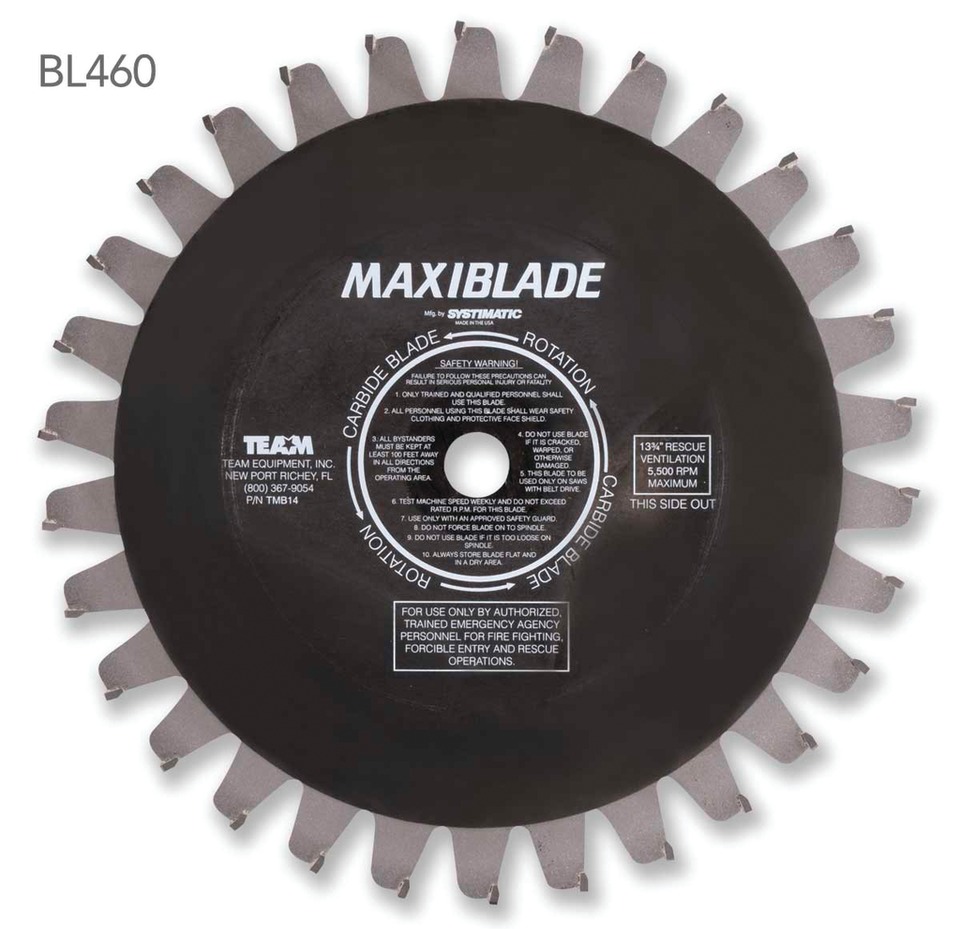
A close examination of a leaky fuel cap will usually reveal marks on the plastic from pliers used to loosen an over tightened cap. Fuel filler caps on power saws are designed to be “finger tight”. Deformed or flattened “O” ring gaskets should be replaced with a new one available from our Mobile Equipment’s small engine mechanic. Inspect the fuel cap’s rubber “O” ring gasket for deformity – a result of over tightening the fuel cap. Never fuel the saw while it is on its side it will allow you to add a few more ounces of fuel but it is not worth the risk of overfilling the tank and spilling gasoline. To prevent over filling the tank and spilling fuel, use a funnel and add fuel to the saw while it is in its upright position. After running the saw, allow the engine to cool a few minutes and add fuel to the fuel tank.
FIRE RSSCUE ROTARY BLADES CRACKED
It is very important to note any unusual vibration which could be the result of a loose, cracked or warped blade.
FIRE RSSCUE ROTARY BLADES FULL
Now start the saw and let it idle for about 10 seconds before bringing it up to full RPM. Check to make sure that the blade is tight and that there are no screws or bolts that have vibrated loose. Next, examine the blade on the saw and spare blades onthe apparatus for cracks, missing teeth or missing segments of diamond blade. Also, consider that ethanol, up to 10% in gasoline, can, over time, dry out and crack seals and fuel lines on 2 cycle engines causing them to leak. Fuel dripping from an inverted saw could be the result of its overfilling fuel that overflows the fuel tank can collect in cavities in the engine housing. This will ensure that the cap and its rubber “O” ring gasket are not leaking. Begin the inspection by inverting the saw so that its fuel cap is upside down. Thoroughly inspect saws at shift change and after each use. The following procedures will be adhered to when operating a power saw:

Being struck with projectiles of blade fragments or the material being cut.Accidental contact with a rotating blade.There are three main causes of injuries from rotary saws they are:

Our saws have the potential to seriously injure an operator and firefighters working near its operation. The saw’s safety, performance and reliability depend on how well the saw is inspected at shift change and after each use, the skill of the operator and the operator’s knowledge of cutting techniques.

Our gasoline-powered rotary (K-12 and K950FD) saws are powerful and effective rescue, forcible entry and ventilation tools. Care, Maintenance & Operation of Rotary Saws


 0 kommentar(er)
0 kommentar(er)
